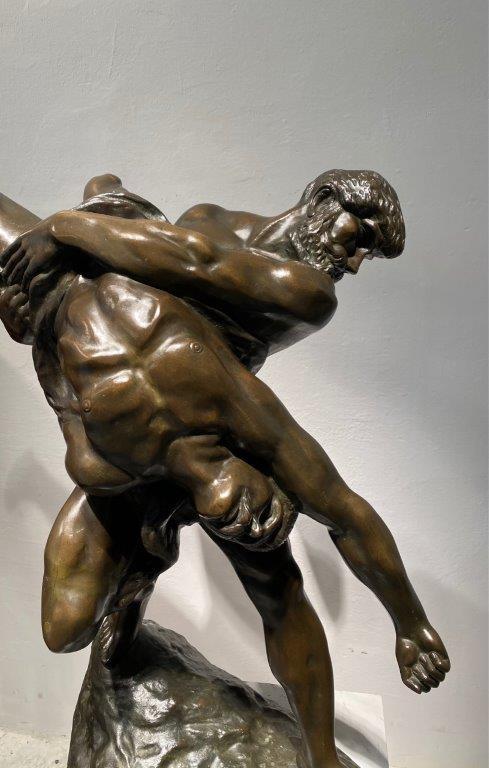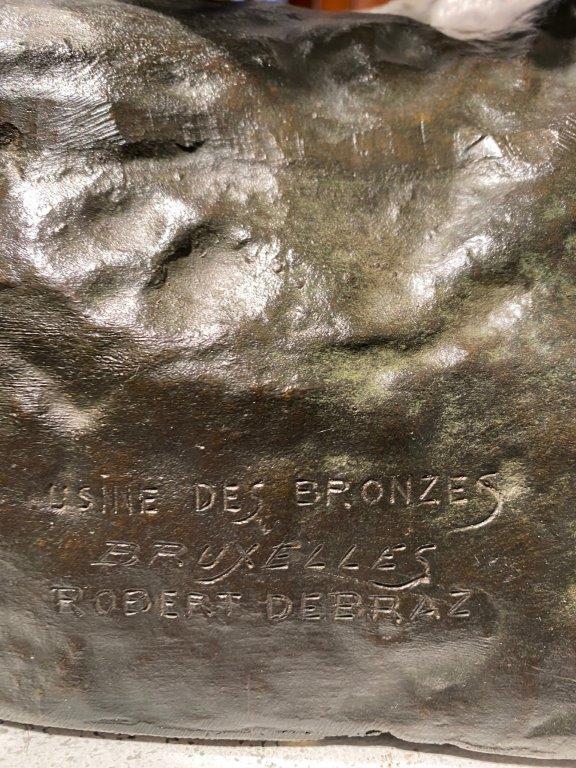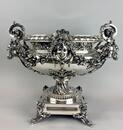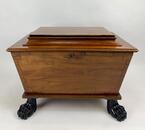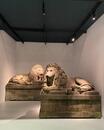|
Dimensions:
H115 x W80 x D52cm.
Joseph Marie Thomas LAMBEAUX VAN ANTWERPEN known as Jef LAMBEAUX 1852/1908 Jef Joseph Marie Thomas Lambeaux, born January 14, 1852 in Antwerp and died June 5, 1908 in Brussels, is a Belgian sculptor. He studied at the Academy of Fine Arts in Antwerp. He is the brother of Jules Lambeaux. In 1883, Jef Lambeaux was one of the founding members of the avant-garde Brussels group Les Vingt. Student of Joseph Geefs then of the Academy of Antwerp. His workshop was located rue de Savoie (destroyed in 1898), then at no. 104 rue Antoine Bréart (destroyed in 1977) in Saint-Gilles (Brussels). He was awarded a medal for his debut in 1881 and a gold medal at the Brussels exhibition. He notably produced Le Faune mordumontré during the Universal Exhibitions of Brussels (1897) and Paris (1900) but which was the center of a controversy over nudes at the 1905 Universal Exhibition in Liège where this work was covered with a veil. . He was considered as one of the apostles of realistic sculpture among the Belgian artists of the XIX ° with his creations resulting from his tormented genius. Great circus lover, Man of the people, Jef Lambeaux will never lose his childhood wonder at the spectacle of wrestlers, boxers and other bodybuilders who once exhibited in the squares. Sander Pierron reports: "In winter, you will meet Lambeaux every evening at the circus. In summer, in July and August, you will be sure to find him in the front row of spectators in the athletic arenas of the fair on the boulevard du Midday." This is where Lambeaux drew inspiration for his powerful sculpted groups that express the effort, pain and emotions of combat. Jef Lambeaux could not but be seduced by the muscular phenomenon Eugen Sandow. Another major work: The Human Passions (1886), a marble bas-relief that was integrated into the pavilion of Victor Horta in the Parc du Cinquantenaire, for which he received a medal of honor at the Universal Exhibition of 1900 in Paris. He was made a member of the Royal Belgian Academy in 1903. Since 1899, the relief of Human Passions has been the subject of praise and criticism. He was made an Officer of the Order of Leopold and of the Order of Bavaria. SourceBénézit, SourceDictionary of Sculptors - The Bronzes of the XIXth Century Museums: Many museums have works by this sculptor. Royal Museum of Fine Arts of Belgium - The Luttegroupe in bronze 240 x 167 x 130 cm Museum of Ixelles: Wrestlers (or the Olympians) dated 1895 Museum of Antwerp: The wrestlers, etc. Ghent Museum, etc.
|
















